Silver ear soup, also known as yin er tang in Chinese cuisine, is a beloved dessert soup celebrated for its delicate texture, subtle flavor, and myriad health benefits. Made from the gelatinous flowers of the Tremella fuciformis fungus, this soup is renowned for its ability to hydrate the skin, soothe the throat, and promote overall well-being. While traditionally prepared with minimal ingredients, modern cooks and health enthusiasts have embraced creativity, experimenting with a diverse array of additions to transform this humble dish into a culinary masterpiece. This article explores the endless possibilities of ingredients that can be incorporated into silver ear soup, from fruits and herbs to nuts and exotic flavors, offering a roadmap to crafting a bowl that suits every palate and occasion.
The Foundation: Understanding Silver Ear Soup
Before diving into additions, it’s essential to grasp the basics of silver ear soup. The star ingredient, silver ear fungus, is a type of edible mushroom with a translucent, jelly-like texture when cooked. It is rich in dietary fiber, antioxidants, and polysaccharides, which contribute to its reputation as a beauty-enhancing and immune-boosting food. To prepare the soup, the dried fungus is soaked until softened, then simmered with water (or broth) until it releases its natural gelatin, creating a silky-smooth base. While some recipes call for minimal seasoning—often just a touch of sugar—the beauty of silver ear soup lies in its adaptability. It acts as a canvas for layering flavors, textures, and aromas, making it a versatile platform for culinary innovation.
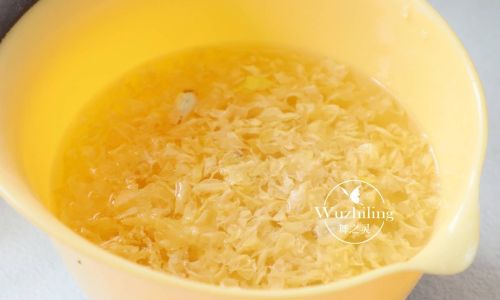
Fruits and Dried Fruits: Bursts of Natural Sweetness
Fruits are among the most popular additions to silver ear soup, offering vibrant colors, refreshing flavors, and a boost of vitamins. Dried fruits, in particular, are prized for their concentrated sweetness and chewy texture, which contrast beautifully with the soup’s slippery consistency.
- Jujube (Red Dates): A staple in Chinese desserts, jujubes add a mild, caramel-like sweetness and a subtle earthy undertone. Rich in iron and vitamin C, they complement the soup’s nourishing profile.
- Dried Longan: These small, round fruits impart a floral, honeyed flavor and a soft, gummy texture. Longan is believed to calm the mind and improve sleep quality, making it a therapeutic addition.
- Goji Berries: Tiny but mighty, goji berries contribute a tart-sweet taste and a vibrant red hue. They are packed with antioxidants and are said to enhance vision and vitality.
- Fresh Peaches or Pears: For a lighter, fruitier twist, add diced fresh peaches or pears during the final minutes of cooking. Their juicy sweetness balances the soup’s gelatinous richness.
- Mango or Lychee: For a tropical flair, incorporate cubed mango or lychee chunks. Their exotic aromas and succulent textures elevate the soup into a luxurious treat.
Sweeteners and Natural Sugars: Beyond White Sugar
While rock sugar (a coarse, unrefined cane sugar) is the traditional sweetener for silver ear soup, modern iterations embrace alternatives that add depth and complexity.
- Rock Sugar: Melted into the soup, rock sugar imparts a clean, subtle sweetness without overpowering the natural flavors.
- Honey: Drizzled just before serving, honey introduces floral notes and a golden amber tint. Raw honey also adds probiotic benefits.
- Brown Sugar or Palm Sugar: These darker sugars lend a molasses-like richness and a hint of caramel, perfect for cozier, wintertime variations.
- Maple Syrup: A non-traditional choice, maple syrup contributes a smoky-sweet complexity and pairs well with ingredients like cinnamon or walnuts.
- Stevia or Monk Fruit: For a sugar-free option, these natural sweeteners provide sweetness without calories, though they may alter the soup’s texture slightly.
Herbal Additions: Healing and Aromatic Notes
Herbs and medicinal plants have long been paired with silver ear fungus to create soups that nourish both body and soul. These additions often carry specific health benefits, from calming the nerves to boosting immunity.

- Lily Bulbs: Dried lily bulbs add a mild, starchy sweetness and a soothing quality. They are believed to alleviate coughs and promote restful sleep.
- Chrysanthemum Flowers: A handful of dried chrysanthemum petals infuses the soup with a delicate, floral aroma and a slight bitterness, which cleanses the palate.
- Goji Leaves: While goji berries are common, their leaves can also be used to add a grassy, slightly bitter note. They are rich in chlorophyll and vitamins.
- American Ginseng: A slice of this adaptogenic root imparts a subtle earthiness and is prized for its energy-boosting and stress-reducing properties.
- Rosemary or Thyme: For an unexpected twist, a sprig of fresh rosemary or thyme during simmering introduces a savory, aromatic dimension.
Nuts and Seeds: Crunchy Contrasts
Toasted nuts and seeds add texture and richness to the otherwise slippery soup, creating a satisfying contrast.
- Almonds: Sliced almonds, lightly toasted, offer a buttery crunch. For a creamier texture, blend a handful of almonds into the soup before cooking.
- Pine Nuts: These tiny nuts add a delicate, buttery flavor and a luxurious mouthfeel.
- Sesame Seeds: Toasted sesame seeds sprinkled on top contribute a nutty aroma and a visual garnish. Black sesame seeds also add a striking color contrast.
- Pumpkin Seeds: Roasted pumpkin seeds lend a hearty crunch and a dose of magnesium and zinc.
- Walnuts: Chopped walnuts provide a bittersweet bite and are rich in omega-3 fatty acids.
Grains and Cereals: Hearty Substance
Whole grains and cereals transform silver ear soup into a more substantial dish, suitable for breakfast or a light meal.
- Job’s Tears (Coix Seed): A staple in Chinese tonic soups, job’s tears add a chewy texture and are believed to detoxify the body and reduce inflammation.
- Oats: Steel-cut oats or rolled oats simmered into the soup create a creamy, porridge-like consistency.
- Quinoa: For a protein-packed twist, add cooked quinoa during the final minutes. Its nutty flavor complements the soup’s delicate taste.
- Barley: Pearl barley lends a soft, plump texture and a mild, starchy sweetness.
- Millet: Cooked millet adds a corn-like flavor and a comforting, grainy texture.
Dairy and Non-Dairy Alternatives: Creamy Indulgence
For a richer, dairy-forward variation, consider adding milk, cream, or plant-based alternatives.
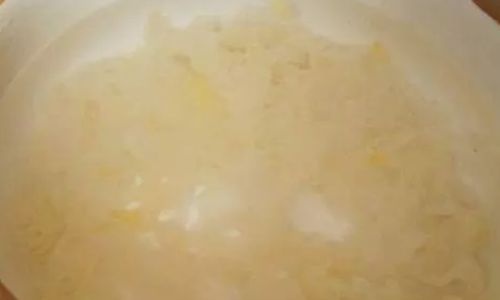
- Coconut Milk: A splash of coconut milk introduces tropical creaminess and a subtle sweetness. It pairs exceptionally well with mango or pineapple.
- Almond Milk: Unsweetened almond milk lightens the soup while adding a hint of nutty flavor.
- Oat Milk: Creamy and neutral, oat milk blends seamlessly into the soup, enhancing its silkiness.
- Heavy Cream: For a decadent touch, a dollop of heavy cream swirled in at the end creates a velvety texture.
- Yogurt: A spoonful of Greek yogurt adds tanginess and a probiotic boost, though it’s best added cold to individual servings.
Floral Infusions: Aromatic Elegance
Edible flowers and floral syrups elevate silver ear soup into an ethereal dessert, perfect for special occasions.
- Rose Petals: Dried or fresh rose petals infuse the soup with a romantic fragrance and a delicate pink hue.
- Osmanthus Flowers: These tiny orange blossoms add a honeyed, apricot-like aroma and are often used in Chinese mooncakes and teas.
- Jasmine Buds: A pinch of jasmine buds releases a heady, intoxicating scent during simmering.
- Lavender: A small amount of culinary lavender lends a calming, herbal note, though it should be used sparingly to avoid bitterness.
- Chamomile: Simmered briefly, chamomile flowers impart a soothing, apple-like flavor.
Exotic and Unconventional Ingredients: Adventure Awaits
For the adventurous cook, less common additions can yield surprising and delightful results.
- Sea Coconut (Double Coconut): This tropical ingredient, often sold in slices, adds a chewy texture and a mild, coconutty flavor.
- Snow Fungus: While sometimes confused with silver ear fungus, snow fungus has a crunchier texture and a neutral taste, making it a complementary addition.
- Taro: Cubed taro, simmered until tender, contributes a starchy sweetness and a pastel purple hue.
- Pandan Leaves: Tied into a knot and simmered in the soup, pandan leaves infuse a grassy, vanilla-like aroma.
- Matcha Powder: A teaspoon of matcha whisked into the soup creates a vibrant green color and a bittersweet, earthy flavor.
Tips for Perfecting Your Silver Ear Soup
- Soak the Silver Ear Fungus Properly: Rinse the dried fungus under cold water to remove debris, then soak it in warm water for 30–60 minutes until fully hydrated. Trim any hard stems before cooking.
- Cook Low and Slow: Simmer the soup gently over low heat to avoid breaking down the fungus into a mushy texture. A slow cooker or double boiler works wonders.
- Balance Flavors: Start with a minimal amount of sweetener and adjust to taste. Over-sweetening can mask the delicate flavors of other additions.
- Experiment with Textures: Pair creamy ingredients (like coconut milk) with crunchy ones (like toasted nuts) for a dynamic eating experience.
- Serve Chilled or Warm: Silver ear soup is versatile—enjoy it hot in winter or chilled with a drizzle of honey in summer.
Conclusion: A Bowl of Endless Possibilities
Silver ear soup is a testament to the beauty of simplicity and the joy of experimentation. Whether you prefer the timeless elegance of jujube and rock sugar or the bold creativity of matcha and lavender, this dish invites you to explore, innovate, and savor. By understanding the interplay of flavors, textures, and aromas, you can transform a humble bowl of soup into a culinary masterpiece that nourishes the body and delights the senses. So next time you simmer a pot of silver ear fungus, let your imagination run wild—the results may surprise you.



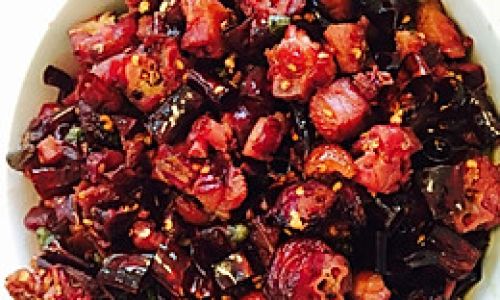
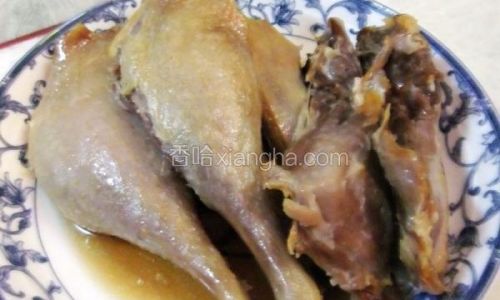
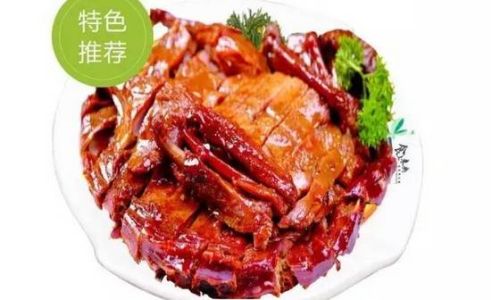
0 comments